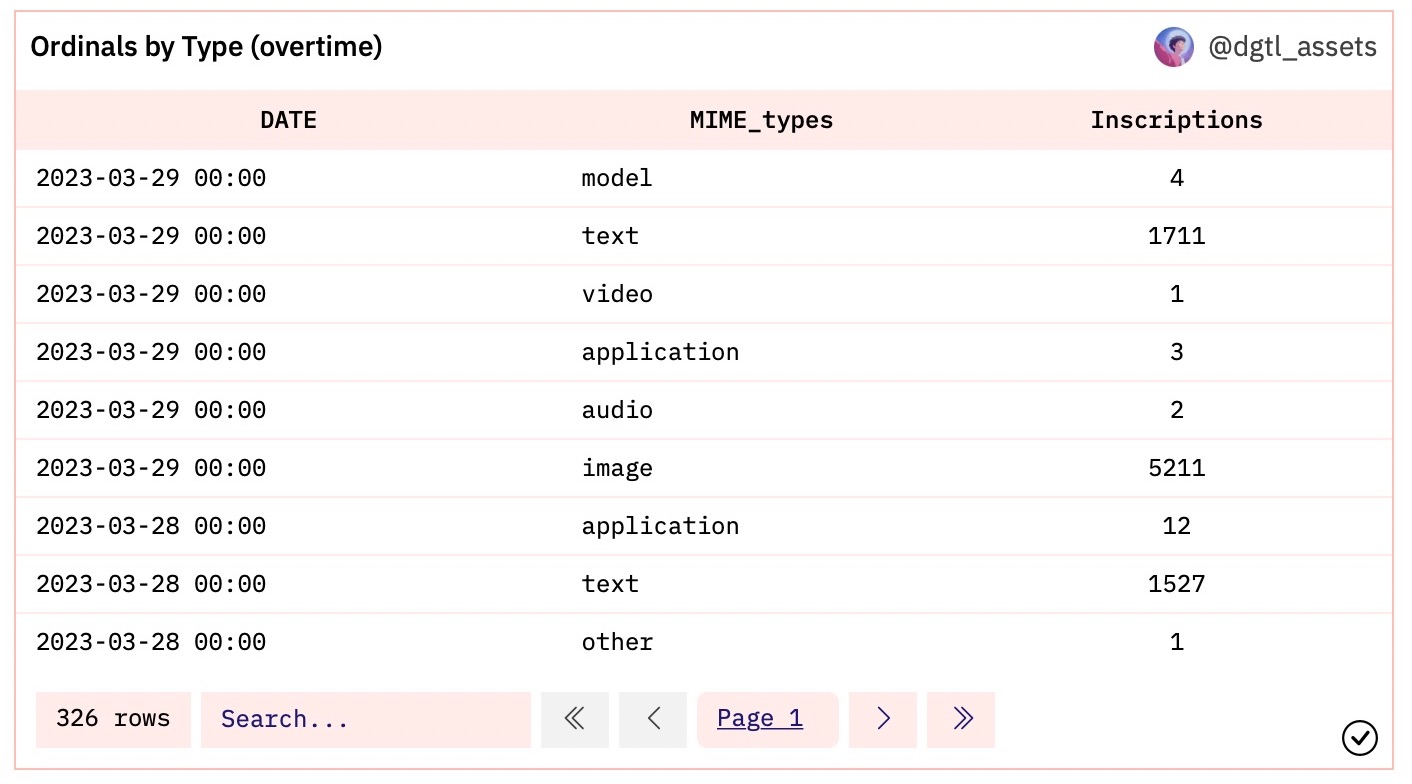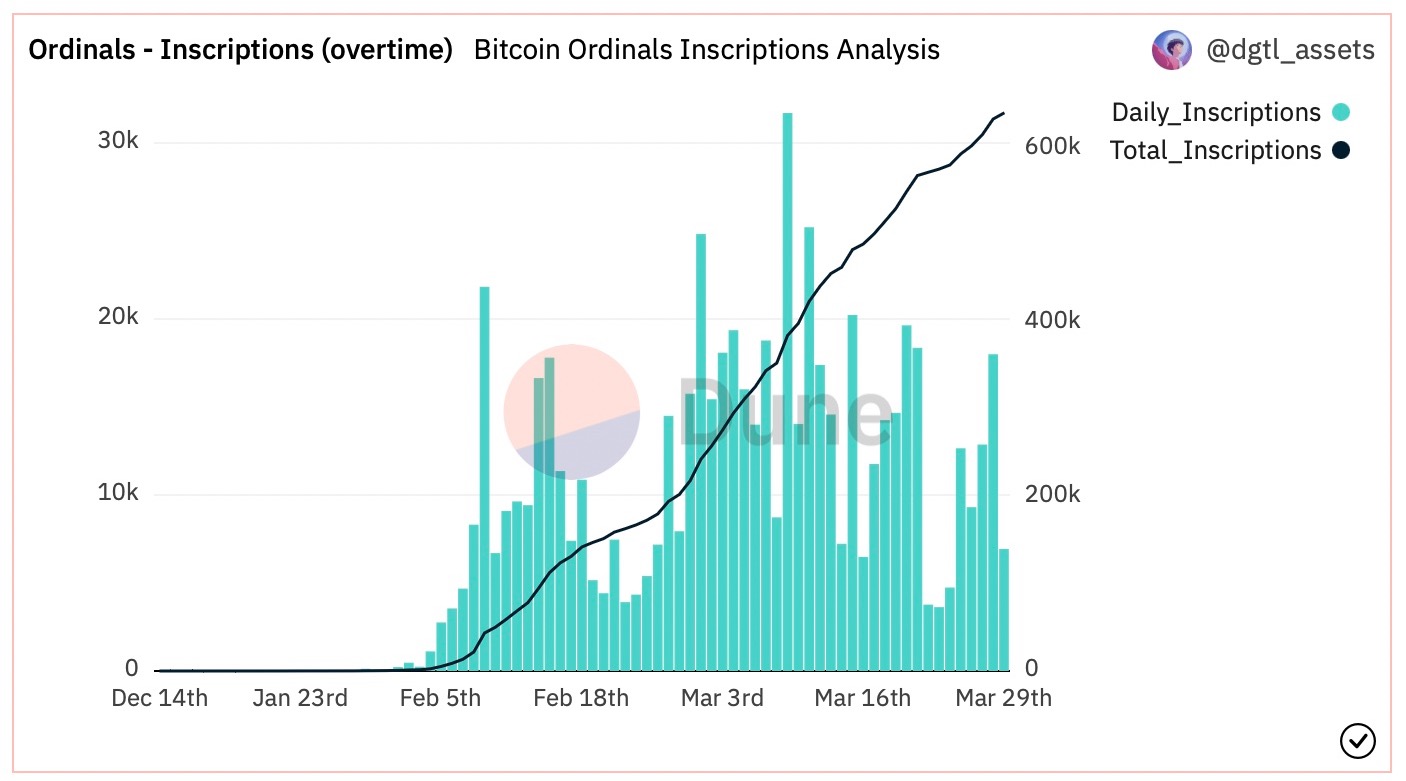It all started with Taproot, the most ambitious upgrade in Bitcoin's history that went live in November 2021, the first major upgrade since the Segregated Witness (SegWit) update in 2017.
The Taproot upgrade significantly improved the efficiency, scalability, and privacy of the Bitcoin network and allowed for more sophisticated smart contracts and transactions to be created.
However, this upgrade didn't really take off until this year when a project called Ordinals introduced a new use case to the Bitcoin network — NFTs.
Bitcoin Ordinals: The Idea and the Base
NFTs saw an explosion in popularity in 2020, but they were mostly minted and traded on the Ethereum blockchain. With the release of Ordinals from ex-Bitcoin Core collaborator, Casey Rodarmor, NFTs are finally appearing on Bitcoin.
Ordinals use Bitcoin's scripting language and Simple Ledger Protocol (SLP) to build a new kind of Non-fungible Token.

While the ordinal inscriptions first began in mid-Dec. 2022, they didn't catch on until late January this year. According to Dune Analytics, 641,143 ordinals have been inscribed to date.
But, What Is It Exactly?
Ordinal Theory is a numbering scheme that assigns a number to each Satoshi (or sats which is 1/100,000,000 of a whole Bitcoin), allowing each sat to be tracked and transferred. These numbers are referred to as Ordinals.
Each Ordinal is numbered in the sequence they are mined. The creation of Ordinals allows for digital assets, such as NFTs and stablecoins, to be attached to the Ordinal.
Ordinals can further be engraved with content, such as images or video files, through a process called inscription. This creates collectibles or on-chain cryptographic artifacts, now commonly known as Bitcoin NFTs.
The difference between these NFTs and the NFTs typically found on Ethereum is that this new kind of Bitcoin NFT is stored permanently directly in the Bitcoin Blockchain, while the traditional NFT is stored on third-party databases, with the collectors in possession of only a link to that file within their digital wallet.
This makes Bitcoin Ordinal NFTs far more attractive for collectors looking to store their NFTs for an extended time without worrying about their NFTs disappearing. In February, Ordinal NFT popularity skyrocketed, increasing 25% in the average network fees per block, consuming nearly 30% of the maximum block space.
While Ordinal NFT activity has grown tremendously, some groups in the Bitcoin community are against this new use case as they believe it would harm Bitcoin's financial and transactional uses.
Adam Back, the CEO of Blockstream, went so far as calling for censorship "as a form of discouragement" in a now-deleted tweet. However, creator Rodarmor, believes that his project is simply an extension of Satoshi's original vision for Bitcoin.
Bitcoin Ordinals Landscape
Ever since Ordinals' entry into the Bitcoin community, more and more members have been inscribing media onto the Bitcoin blockchain. And, the hype surrounding Ordinals is getting bigger and crazier with each passing day.
Recently, 'BRC-20' was launched, allowing people to mint and transfer any tokens they want through the Bitcoin blockchain. This latest development, which is still in its very early stages, has got a lot of creators and collectors excited and is now being used as an equivalent of Ethereum's ERC-20 token standard. Besides 'BRC-20', some notable Bitcoin NFT collections include Bitcoin Rocks, Ordinal Loops, and OnChain Monkey.
Taproot Wizards is another popular project that involves a hand-drawn collection of 2,101 Wizards created by developer Udi Wertheimer in cooperation with Bitcoin mining company Luxor. This collection is known for the largest transaction ever processed on the Bitcoin network, with the first entry, inscription 652, taking up a 4MB space.
Bitcoin shrooms is yet another one, with the first shroom being Inscription 19, created by an unknown group of individuals. Currently, there are only 210 bitcoin shrooms inscribed into Bitcoin Blockchain. Popular NFT project Crypto Punks has also made its way to Bitcoin in the form of Ordinal Punks. These are 100 distinct punk characters, with the first one recorded as inscription 642 on the Bitcoin blockchain.
Even the creators of Bored Ape Yacht Club (BAYC), Yuga Labs, have sold their original art collection through Ordinals. The collection, called 'TwelveFold', debuted at the end of February and comprised 300 generative art pieces, limited in number, and each one inscribed to the Bitcoin blockchain.
It is one of the highest-profile launches through Ordinal so far. All the pieces of the collection are arranged on 12x12 grids, which is a nod to how the Bitcoin blockchain stores its data. The art collection blends 3D graphics with hand-drawn features.
In an early-March auction, the Bitcoin NFT set attracted 3,246 bids over a period of 24 hours. It concluded with 288 successful bidders spending a combined $16.49 million in BTC. Of these, the highest bid was for 7.1159 BTC (about $159,500), while the lowest successful bid was for 2.2501 BTC (about $50k). The remaining 12 pieces were held for contributors to be distributed through Yugas charity programs.
The Ecosystem Evolves
Bitcoin's ability to execute smart contracts is much more limited than Ethereum and other blockchains that feature established NFT markets, as is its product stack, including infrastructure, tools, and platforms. However, the hype surrounding Ordinals is growing each day, which can see the largest cryptocurrency emerging as an Ethereum rival in the world of NFTs.
Not to mention, the Bitcoin blockchain now has a purpose beyond peer-to-peer payments. This has enabled the Bitcoin blockchain to engage with digital content creators, the mainstay of the Internet economy, which can unlock a flood of new creative innovations across the space. As this happens, it will push others within the crypto community to create economically viable protocols on Bitcoin.

On top of that, Ordinals could improve the security budget scenario that may come up in the future, as mining rewards decline amid subsequent halvings. After all, growing demand for Bitcoin ordinals would incentivize miners to keep the network secure.
With Casey Rodamor's Ordinal project growing from a niche interest into accelerated technology capturing the attention of collectors and developers alike, Bitcoin's ecosystem could finally see all the developments to drive not just NFT but also DeFi to flourish on the Bitcoin network.

















